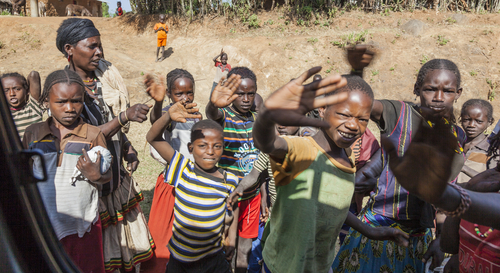Study Suggests How Sickle Cell Plays a Role in Patient Body Size
Written by |
A new research study has determined that body measurements (anthropometric variables) of children with sickle cell anemia are usually smaller than healthy children.
The research study, “Body mass index and other anthropometric variables in children with sickle cell anemia,” was published in Pakistan Journal of Medical Sciences.
Sickle cell anemia is a frequently inherited hematological disease among people of African descent and common in Nigeria. Symptoms of the disease are many and include chronic haemolytic anemia, musculoskeletal anomalies, infections and some growth problems.
According the report, abnormal growth occurs often in children with sickle cell anemia with nutrition playing a key role in anthropometric status, illness severity and body composition. For example, energy supply is known to cause a constant disturbance in children with sickle cell anemia which influences body mass index (BMI), which can be due to high metabolic rates, inefficient absorption and raised degradation.
The study, conducted out of the University of Nigeria Teaching Hospital (UNTH) Ituku-Ozalla Enugu, looked closely at a cross-section of children aged between 6-20 years; 20 male and 20 female. The sickle cell patients were all in a steady state of the disease. Their status was followed for six months.
Nutritional evaluations were conducted by using anthropometrical variables. The authors showed that 48% of the children with sickle cell anemia were underweight. The control group had significantly larger body surface and weighed more.
The monitoring of growth, and nutritional status, for children with sickle cell anemia is a vital tool for comprehensive care. It facilitates early diagnosis of growth failure and nutritional intervention.
Because the cut-off used for BMI classification is the same in both children with and without sickle cell anemia, a significant difference was noted between the body measurements of children with sickle cell anemia and those without the disease.
Patients tended to be slightly older than height matched controls. The delay in maturation of those patients is believed to result from the effect of chronic anemia and low endocrine production – especially in the growth hormone in the patient during childhood.
The study concluded that BMI and several other anthropometric variables for children suffering from sickle cell anemia were significantly lower when compared to healthy haemoglobin genotype.






